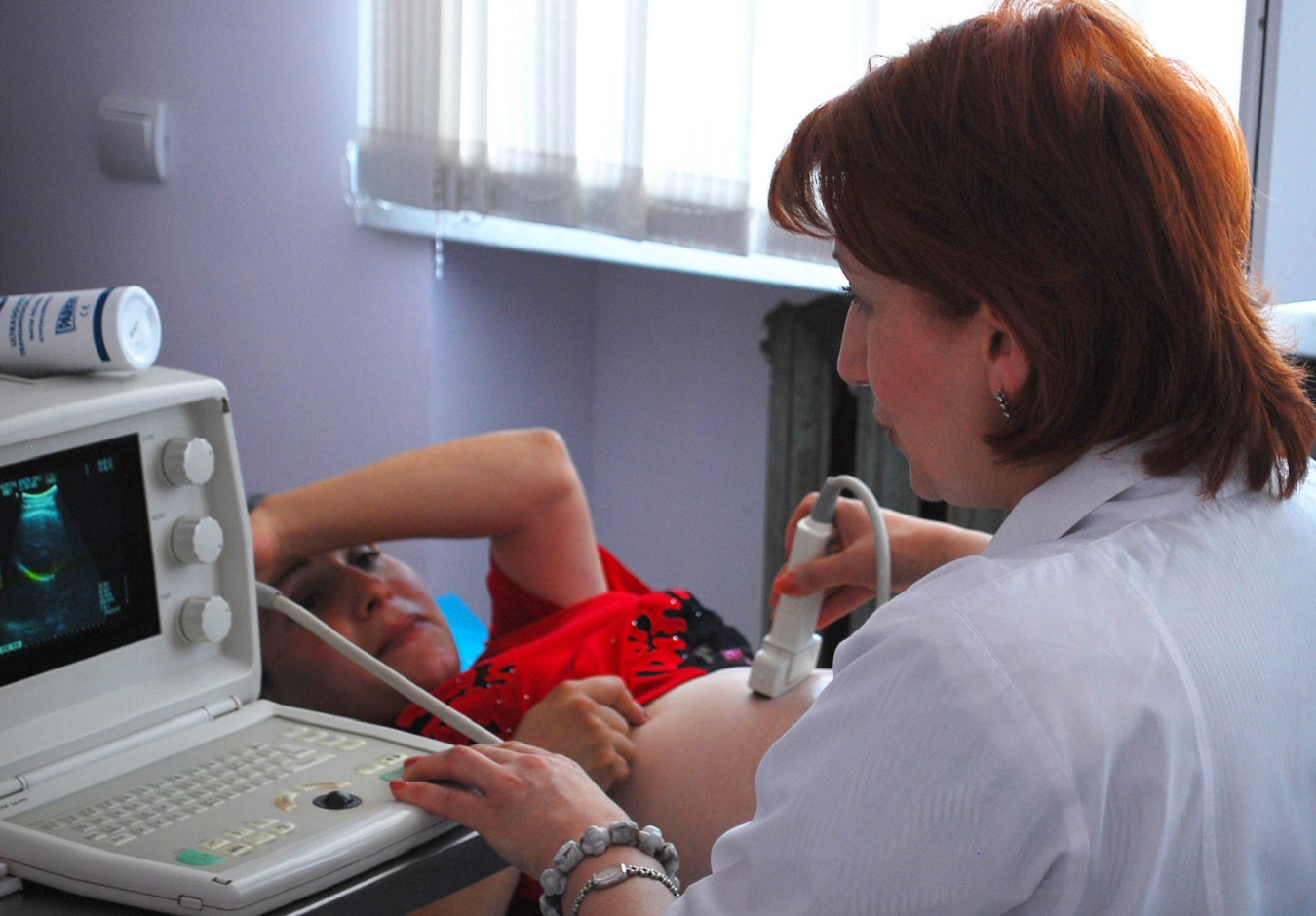Lena would love to have another baby, but her fears are bigger than her desire. She had almost died while delivering her first two babies; and, so, all the thoughts of getting pregnant for the third time end up with a refusal to. Her daughters are now 11 and 10, but she vividly remembers the problems that rose during her pregnancies and labor. Lena was diagnosed with Preeclampsia, a hypertensive pregnancy disorder accompanied with multi-organ damage. That’s a pre-terminal stage of the disease, which means neither the mother nor fetus may survive in case it reaches a terminal condition.
“That was my first pregnancy, I had all the check-ups, and they [the doctors] would say everything was just fine, and insisted my health condition was as good as that of a school-aged girl. But I had a feeling that something was not going the way it should. The more the fetus grew, the more issues I noticed: my limbs would swell, even my face, so, I had to sleep in a seated position. Meanwhile doctors would keep saying that everything was fine. So did the test results,” Lena recalls.
Throughout the seven months of her pregnancy she continued to tell her doctors she had the feeling she had problems, but had been getting advice to calm down. Well into the seventh month of her pregnancy Lena was undergoing a regular check-up. The results seemed bothering to the doctor, who sent Lena for another test, and called Lena back in two hours to tell her she needed to get back to the clinic.
“The additional tests had shown an immense amount of protein in my urine and a major and uncontrollable hypertension. After hours of failed efforts to decrease my blood pressure, my husband and my family were told I needed an urgent intervention otherwise neither my baby nor I were going to survive.”
The disease could claim lives. Lena says it was the doctors’ negligence of her complaints that had resulted in the situation. She believes otherwise her condition would be prevented at an earlier stage, and her baby wouldn’t be born premature and there wouldn’t be a need to fight for its survival in the early days of her life.
“My second pregnancy went smoothly, but I was having a C-section to deliver the baby, and got skin burns because of malfunction of the device used during the surgery. I don’t really know what was it that went wrong then, but my belly was totally covered in burns, as did the doctor’s hand,” Lena shared with Ampop Media.
Numbers of delivery and post-partum complications grow among women
According to the Annual Statistical Report on Mother and Child Health the number of complications arising in women during and post-partum have shown dramatic growth in the last 30 years. For example, in 1990s anemia was diagnosed in 13.8 pregnant women out of 1,000 (which made just 1.4%); to compare, in 2021 the number reached 135.1, or the 13.5% of women.
In 1990s problems of genitourinary system (previously known as the kidney diseases) were registered in only 3 out of 1,000 women; in 2021 the numbers reached 83 (i.e. in more than 8%).
Click on one or more option in the dropdown menu of the red headline to get more information about a certain condition or to compare data on diseases.
Ruzan Martirosyan, head of the Mother and Reproductive Healthcare Section of the Mother and Child Healthcare Department at the Ministry of Healthcare told Ampop Media the growth in numbers of complications may have multiple reasons. “The growth in the number of thyroid diseases may be a result of iodic deficit in Armenia. Venous pathologies may have more than one origin; that may be an inherited predisposition, sedentary life or a job requiring a woman staying in standing position for long hours in a row. Any of these may bring complications in the period of pregnancy.”
Another type of frequent complications, that of placenta increta, may be a result of C-sections a woman has undergone throughout her life. In case of frequent reliance on C-sections, more women may encounter the problem. Martirosyan says diseases and complications may also be typical to time period or changes in lifestyle of a pregnant woman.
Click on a marz and one or more option in the dropdown menu to get more information.
Martirosyan questions some of the information in the annual report. For example, she says it is unclear whether the growth in numbers of diseases is caused by their actual occurrence, or the poorer data available for the 1990s; or, because the numbers are available now because of the more actively performed check-ups and better diagnostics. Yet, Martirosyan is sure not all complications represented in the statistical data are directly relatable to pregnancies. Too often, pregnancy is not a reason for a certain health condition, but rather a trigger for it to reveal itself.
“The culture of visiting a doctor is still far from being perfect. As a rule, an adult woman first sees a doctor when she is already pregnant and needs supervision of an obstetrician. It is only then that tests are done, and oftentimes it is those tests that reveal abnormalities. On the other hand, a woman who has never seen a doctor before, is unaware of symptomless complications, and the pregnancy (which brings additional load on a woman’s body in terms of hormonal and physical changes it undergoes) triggers those diseases. All that gets reflected in the statistics.”
Check-ups are required before planning a baby
By a decree of the Minister of Health of Armenia starting 2020 newly married couples have opportunity to undergo free medical check-ups to identify the risks during potential pregnancy. The check-up is available three months following the registration of the marriage by a visit to polyclinic with a marriage certificate.
“The available tests vary. For example, some vaccination against certain infections may be required, for the lack of one may have certain consequences, in case a woman gets infected in the period of pregnancy. The check-up may identify a chronic condition at an early stage, because in some cases medication cannot be prescribed in the period of pregnancy. Couples are also checked for infections, as they may seriously affect the pregnancy. The list of free tests is pretty long, in fact,” the expert says.
The opportunity is available for both women and men.
The number of visits grows on a slow pace, despite the experts say there is still a lot to be done to increase awareness among the population.
Check-ups may not always guarantee against problems
Adelle is a mother of two, although she has had three pregnancies. The birth of her first child, a girl, has been very easy. And yet her second pregnancy that occurred five years following the birth of her daughter had to be interrupted at the fifth month.
“In the third month of my pregnancy I appeared to have uterine hypertonia and a hematoma; my blood was extremely thick. I spent the third to fifth months of pregnancy in bed. I sometimes happened to get by intravenous medication with needles in my both arms at a time. But all that proved useless,” Adelle shared with Ampop Media.
Adelle says she took all the tests following the abortion to make sure her health was fine. The blood issue was gone, her health was restored, and she was psychologically prepared to get pregnant once again.
“I learned I had developed a hematoma right after I learnt of my third pregnancy. I was under doctors’ supervision from the first day, but my health deteriorated again during my fifth month, and, so, I was forced to spend the next two months in bed again. As I reached the seventh month of my pregnancy, we ran out the ability to fight for it further, and so I gave birth to my boy with the help of a C-section. It was extremely complicated, but, fortunately, everything is just fine now.” Now, after the pregnancy, Adelle’s blood issue is gone.
Complications that are developed or are identified during pregnancy may be unmanageable and unpredictable. Lena says her story shall prompt women to listen to the signals of own body and insist to be checked, because negligence may cost a life.
Adelle also calls on everyone to be consistent and trust one’s life to doctors, despite the efforts may sometimes require months to show results. And doctors plead to undergo check-ups. Complications are only numbers in an annual report; in real life they may bring to irreversible problems.
By Arusyak Kapukchyan
Visualization: by Karine Darbinyan
More articles about #AccesstoHealthCare
© All the stories, infographics and other visuals bearing the Ampop Media logo is possible to publish on other audiovisual platforms only in case of an agreement reached with Ampop Media and/or JFF.
Փորձագետի կարծիք
First Published: 25/12/2022









